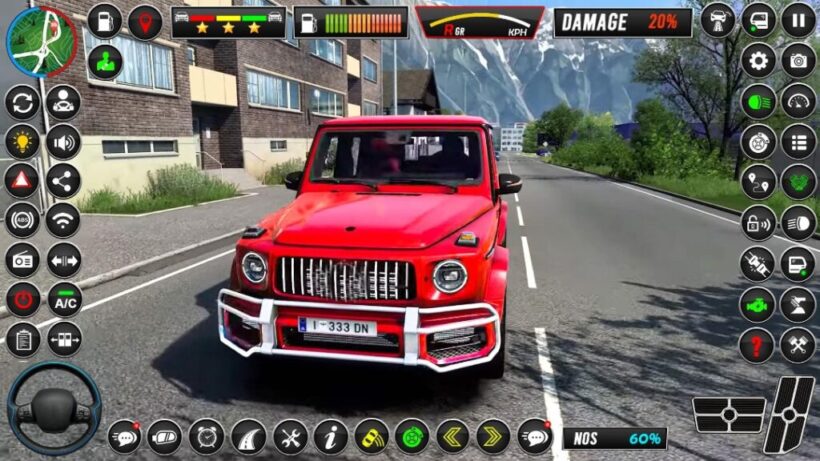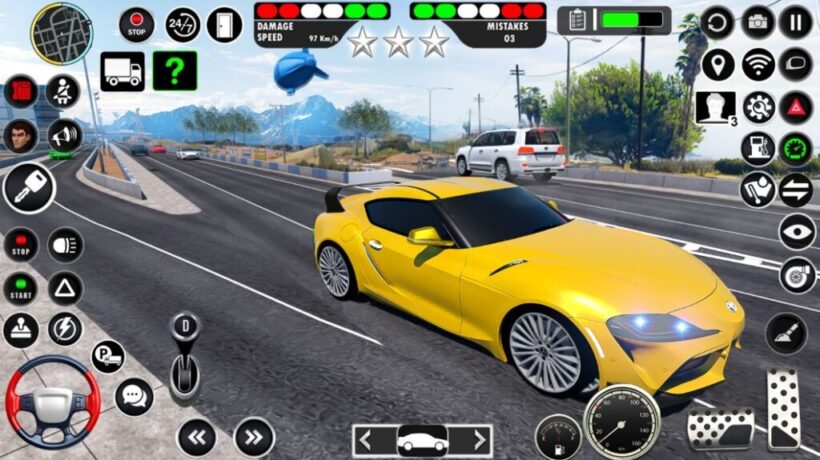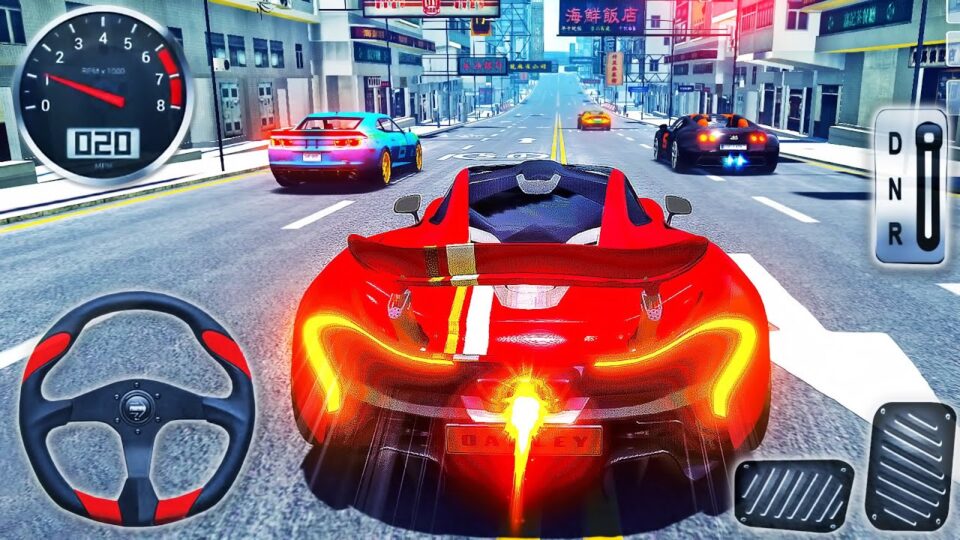In recent years, the conversation surrounding what racing professionals say about the accuracy of modern driving games has become increasingly prominent. There was a time when skepticism reigned regarding whether simulation game setups could really mirror the real-world experience of racing.
Yet, as technology has advanced, especially with laser scanning, the accuracy in driving games has reached extraordinary heights. Today, these games provide players with tracks that reflect their real-life counterparts with remarkable detail—fractions of an inch accuracy has become possible, transforming how drivers train and understand race conditions.
As awareness grows about the benefits of sim racing, professionals have begun to embrace these tools, recognizing their potential as effective training resources. Additionally, innovations in vehicle dynamics modeling, particularly concerning tire performance, have further enriched the simulation experience. However, with benefits come critiques; while games like Gran Turismo and Forza Motorsport can hone crucial racing skills, they’ve also been noted for potentially encouraging reckless driving behaviors among younger players. This duality forms a fascinating landscape worth exploring, delving into how virtual practice can enhance real-world performance.
Key Takeaways
- Modern driving games have evolved significantly due to advancements in technology, particularly laser scanning.
- Many racing professionals have started to acknowledge the training benefits of simulation game setups.
- Accuracy in driving games often reaches fractions of an inch, reflecting real-world track details.
- Systems for modeling vehicle dynamics have improved, aiding in the understanding of tire performance.
- Critics argue that while racing games can develop skills, they may also promote risky driving habits.
- Games like Gran Turismo and Forza Motorsport are becoming valuable tools for both amateur and professional drivers.
- The integration of virtual reality adds a new dimension to sim racing experiences.
Realism in Modern Driving Games
Achieving a high level of driving game realism has become a primary focus in the design and development of racing simulators. This focus stems from advancements in technology that improve the overall experience for both casual gamers and serious racing professionals.
Advancements in Track Simulation
Recent advancements in track simulation, particularly the shift towards laser-scanned tracks, have revolutionized the way driving games portray real-world circuits. This technology allows a precise replication of every corner, elevation change, and surface texture. The accurate representation of tracks positions racing simulators as valuable tools for driver training. Players can practice on the same tracks they will encounter in real-life races, reinforcing their preparedness and enhancing their confidence.
Understanding Vehicle Dynamics
Understanding vehicle dynamics is crucial for creating realistic driving experiences. Most modern racing simulators include well-modeled vehicle physics that mimic handling characteristics under various conditions. Yet, there is a commonly noted gap in delivering realistic tire feedback, which fluctuates based on real-world conditions such as weather and track surface. Professional feedback on driving games indicates that while simulators may lack g-force effects, they can still effectively teach essential skills to drivers. By focusing on visual cues and leveraging accurate simulations, even basic driving games can provide a platform for learning and improving driving techniques.
| Feature | Importance | Impact on Driving Game Realism |
| Laser-Scanned Tracks | High | Accurate representation of real-world circuits |
| Vehicle Physics | Essential | Mimics real handling characteristics |
| Tire Feedback | Moderate | Influences feedback on vehicle response |
| Visual Cues | High | Critical for training and skill reinforcement |
What Racing Professionals Say About the Accuracy of Modern Driving Games

The integration of virtual reality in racing games has created a new realm of driving game realism. Professional drivers express that this immersive technology has significantly impacted their training methods and performance on the track.
Virtual Reality and Horizon Locking
Virtual reality offers a groundbreaking experience, enhancing the simulation of racing and providing a heightened sense of presence. Horizon locking technology helps maintain a consistent view of the track, allowing drivers to gauge changes in elevation and curvature more effectively. This combination aids in replicating real-life scenarios, making it easier for users to adapt their driving styles while training.
For further insights into how driving simulations impact racing and real-world driving skills, you can explore additional resources at https://underash.net/.
Feedback from Professionals
Racing professionals share valuable insights regarding the accuracy of modern driving games. Many acknowledge the advancements in simulation, noting that while the experiences can be remarkably close to reality, there are still concerns about unrealistic behaviors that could mislead drivers. Professional feedback on driving games highlights the importance of understanding the difference between virtual consequences and real-life risks. Even so, simulation game opinions often reflect that embracing these technologies can foster improved driving habits when used judiciously.
| Aspect | Virtual Reality Advantages | Concerns Raised |
| Immersion | Provides a more lifelike racing experience | Can create a false sense of security |
| Horizon Locking | Aids in realistic perception of track changes | May not fully replicate physical sensations |
| Skill Transfer | Improves spatial awareness for real racing | Risk of overconfidence in real-life scenarios |
| Technical Skills | Enhances performance and technique | Varies by individual experience with simulations |
The input from racing professionals confirms that while simulations can differ in realism, they provide crucial tools for improvement in performance and technical skills.

Conclusion
The evolution of modern driving games has undeniably transformed the landscape of virtual racing, aligning more closely with the perspectives of racing professionals. Enhanced realism and accuracy in driving games have become possible through technological advancements such as laser scanning and virtual reality. These developments not only contribute to immersive gameplay but also serve as valuable training tools for aspiring racers, bridging the divide between simulation and real-world racing experiences.
However, it is crucial to consider the feedback from racing professionals regarding the balance between entertainment and responsibility. While simulation game opinions may highlight the benefits of these advanced driving game mechanics, there is also concern about the potential risks, especially for young drivers. The ability to simulate high-speed racing scenarios can lead to a desensitization to the actual dangers present on the track.
In summary, the connection between racing professionals and modern driving games is marked by both enthusiasm for the realism offered and caution regarding its implications. You should appreciate the potential benefits these games provide while remaining aware of the responsibilities that come with them. As driving game realism continues to improve, it is essential to engage with these simulations thoughtfully, ensuring they contribute positively to both skill development and safe driving awareness.

